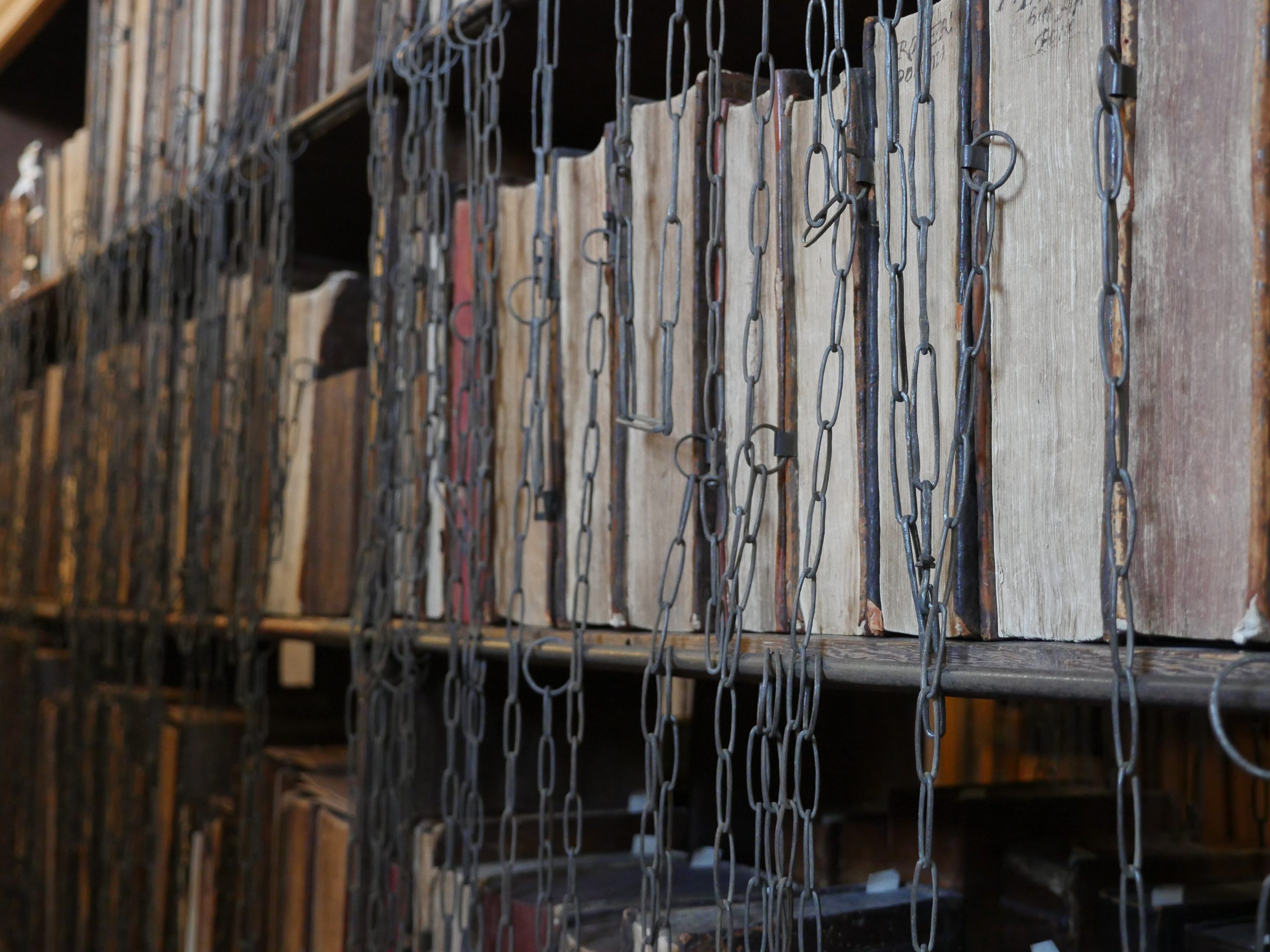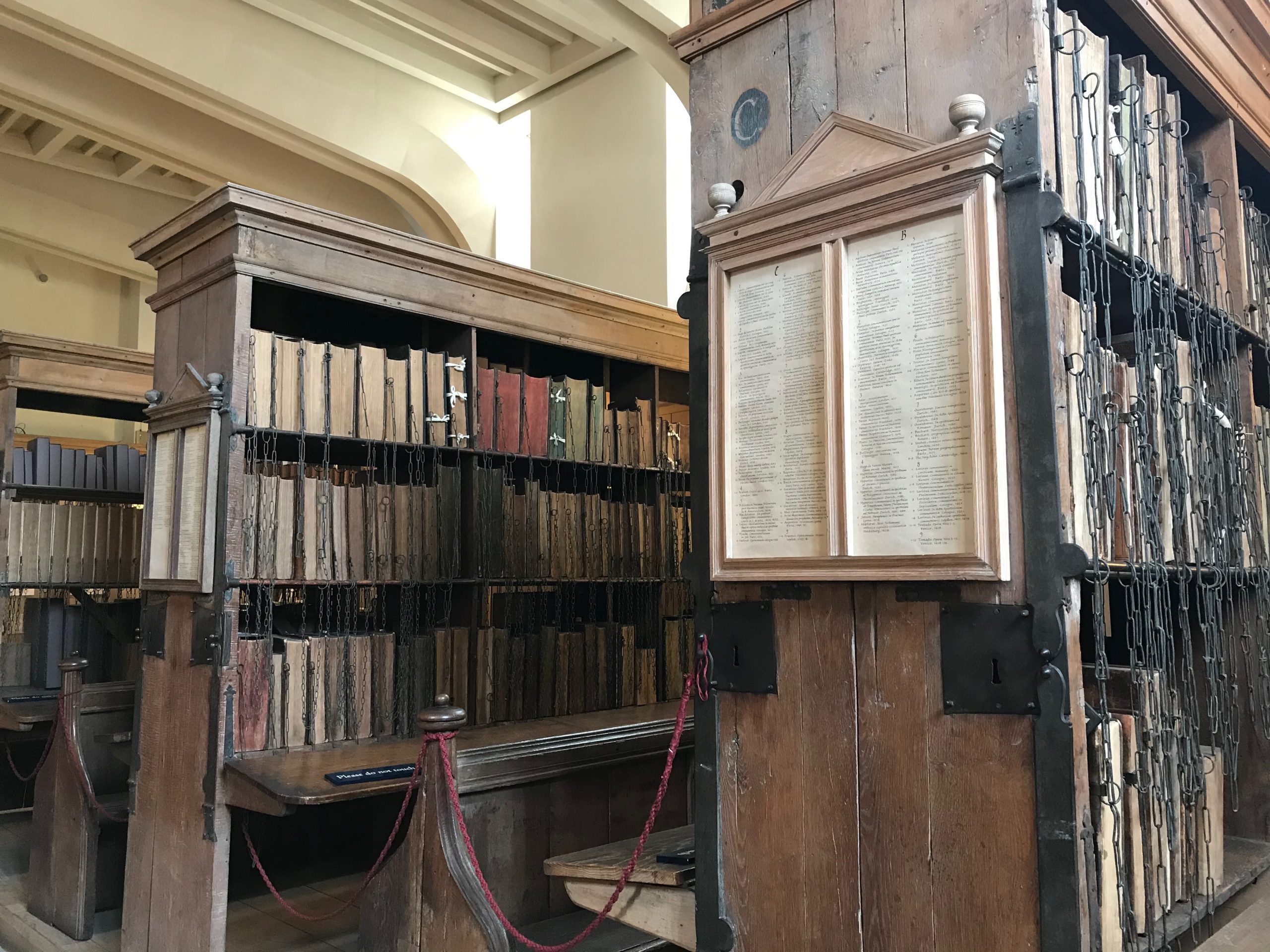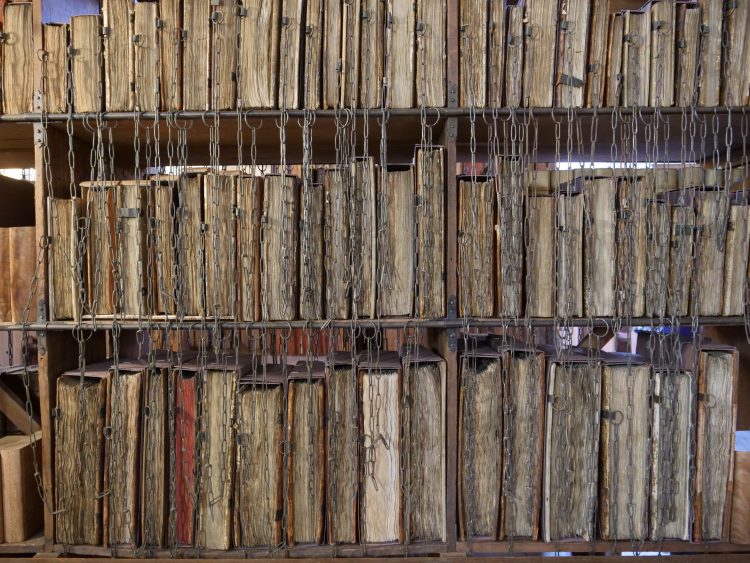Giving off serious Hogwarts vibes, Hereford Cathedral’s Chained Library is the largest of its kind in the world. Home to 1,500 texts, including 229 medieval manuscripts, the Chained Library is a surviving example of a once popular security system in European libraries. During the Medieval and Early Modern period, books were seen as valuable commodities, and were chained to the shelves to protect against theft.
While there has been a working theological library at the cathedral since the 12th century, the Chained Library dates from 1611 and still contains its original chains, locks and keys. The chains are attached to the edges of the books’ front covers, and are connected to a rod running along the bottom of the shelf. Unlike modern libraries, the books are shelved with the spines facing the back of the bookcase. This enables the books to be lifted down easily onto the desks below, without tangling the chain.

From illuminated texts to early printed books, the library has a wealth of literary wonders to discover. These include:
The Hereford Gospels
Complete with illuminated letters, this 8th century text is the oldest artefact in the cathedral. It is written in Latin, and contains the four gospels: Matthew, Mark, Luke and John. Decorated in the style of manuscripts such as the Book of Kells, the Durham Gospels and the Lindisfarne Gospels, the book is thought to have been produced by a single scribe in a scriptorium in the Welsh borders. Today, bishops and deans at the cathedral continue to take their oaths on the book.
Gratian’s Decretum
One of the most influential legal texts of the medieval era, Gratian’s Decretum provides a valuable insight into church law. It was compiled by the esteemed scholar in the 12th century, and proved popular with both academics and ecclesiastical authorities. Soon after its completion, copies of the text began to circulate in France and England. More than 150 copies of the work written before 1200 are thought to remain in modern libraries.
The Hereford Breviary
Dating back to the 13th century, this text gives an insight into the daily services that were sung at Hereford Cathedral in the Middle Ages. Unlike some medieval cathedrals, Hereford did not have a scriptorium of its own. This is because it was a secular foundation, and was run by deans and canons instead of monks. As a result, many of its manuscripts were made locally, and may even have been commissioned by the cathedral.
Guido Bonatus, Book of Astronomy
In the 13th century, the astrologer Guido Bonatus wrote his celebrated Book of Astronomy, which was studied by every medieval astrologer. This printed book of Bonatus’ work was made in 1506, and contains woodcuts depicting the signs of the zodiac and planetary diagrams. This spread contains personifications of the planets Jupiter, Venus, Mercury and Mars.

The Chained Library at Hereford Cathedral is open to the public from Monday – Saturday, as part of the Mappa Mundi and Chained Library exhibition. For more information about the exhibition and ticket prices, click here. Hereford Cathedral is free to visit, but donations are welcome.
Discover more beautiful libraries
If you’re in search of spectacular libraries, check out my posts on the following:

